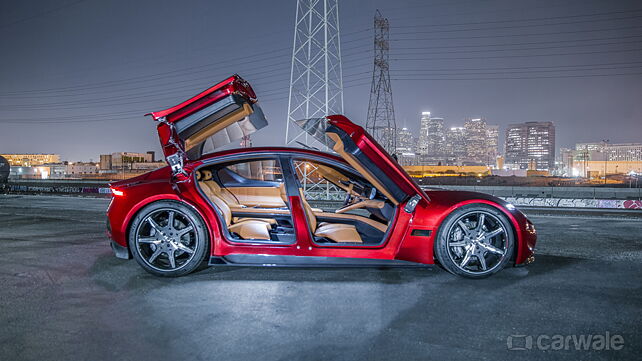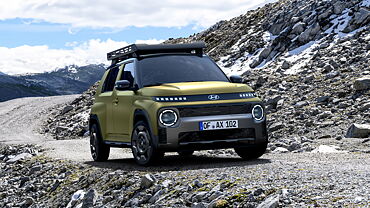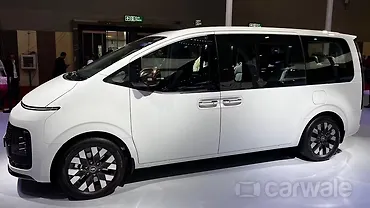
Fisker EMotion finally makes its debut at the stage of 2018 Consumer Electronics Show in Nevada and it looks stunning in the red hue. And for the first time since its inception, we got a proper view inside the opulent yet modern cabin of the EMotion.

The EMotion is Henrik Fisker’s second coming to the electric car making business. The Danish-born American automotive designer founded a new company named Fisker Inc. and has been working on the first product for more than two years now. The EV carries forward all the design aspects of its prototype from 2016. The unique design elements include crazy butterfly doors, flared wheel arches, aggressive and aerodynamic front fascia with boomerang headlamps, a swooping roofline, absent rear overhang, and stout proportions with massive 24-inch wheels.

Although the car measures around five metres, The cabin is as luxurious and spacious as the Mercedes-Benz’s flagship, the S-Class. This is possible due to the unconventional powertrain which is shifted either under the floor or in the four corners of the car thus helping to free up space for a cabin to rival that of the Luxo-barge. There is a host of infotainment screens all around the cabin which are richly wrapped in the most exotic materials. The centre console gets Tesla-style dual screens while the instrument cluster is also all-digital. It is a four-seater but can be had with a bench at the rear to carry five people in luxury.

Fisker has said that the EMotion makes use of the Flexible Solid State battery with a recharge capacity of nine minutes. The new battery technology incorporates graphene supercapacitors instead of the traditional lithium-ion batteries. The patented solid battery technology delivers 2.5 times the energy density of lithium-ion batteries, boasts the carmaker. These batteries will be developed in-house by Fisker’s battery division – Nanotech. The EMotion claims a range of about 645+km on a single charge with a top speed of 260kmph. The new battery technology, when conceptualised, will enable 500 miles on a single charge with the charging times as low as one minute, according to Fisker.

The EMotion’s carbon aluminium structure is 20 per cent lighter than the other cars of similar proportions. The autonomous credentials are still in the pipeline, but the car does come with all the required hardware at the moment. Although the logistic is still under development, the future car will be fully autonomous once the technology is developed and integrated by the supplier, said the carmaker.

The Fisker EMotion is speculated to be produced at the VLF Automotive facility alongside the Destino V8 and Force 1 V10 under Fisker’s assistance. But the official production announcement will come in late 2018. The carmaker hopes that this car will be able to pave the way for a more consumer-friendly, mass-produced and affordable electric car that Fisker claims will be more affordable than the Chevy Bolt and Tesla’s Model 3. Fisker is aiming for the EMotion to compete against the Tesla S when it goes on sale sometime in 2019.



































